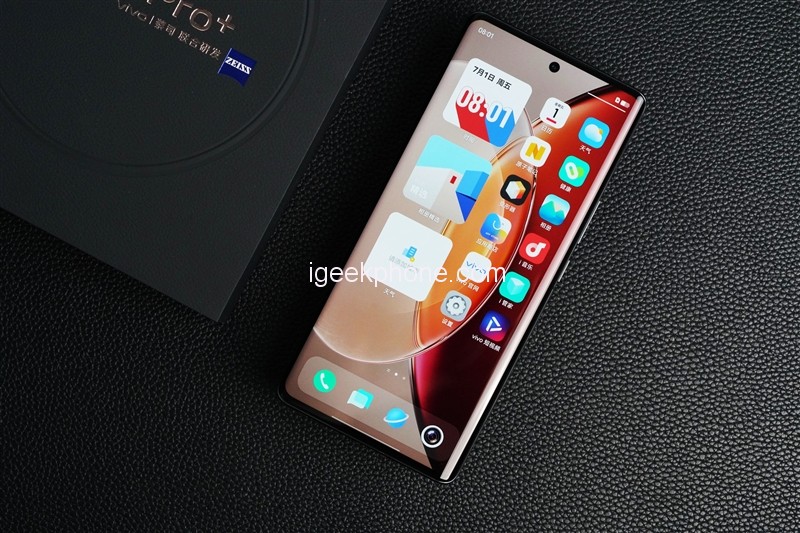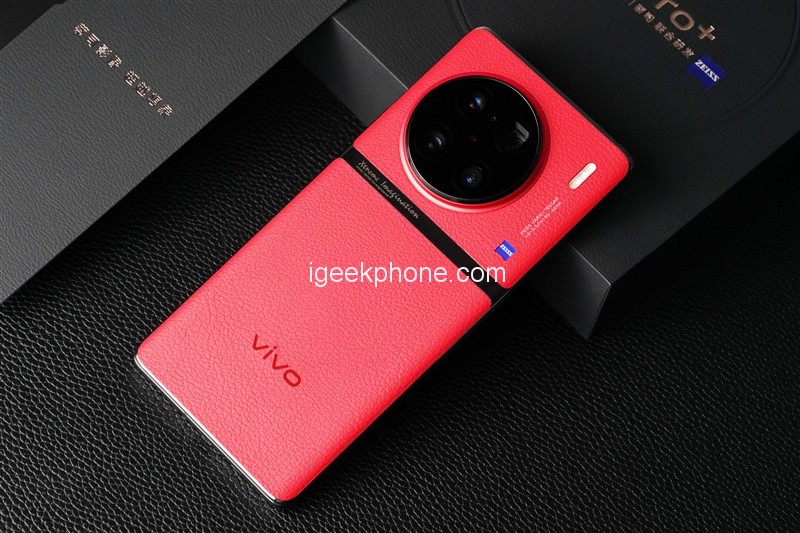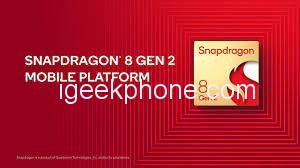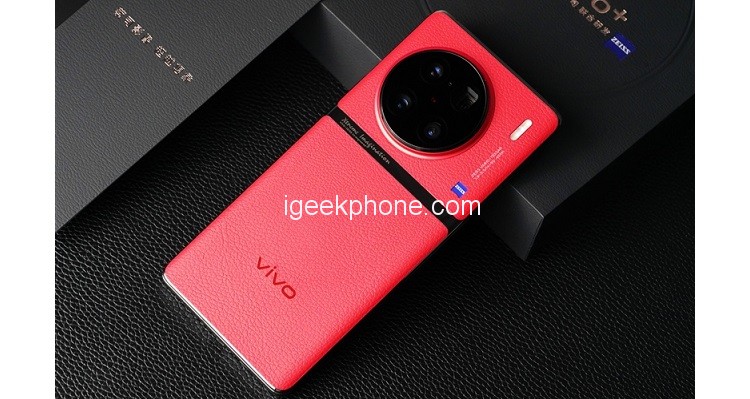As the strongest flagship series of Vivo, the X series has been born for ten years and has always shouldered the important task of Vivo to explore the future of imaging. Each generation has indeed brought us enough surprises.
XShot supports the industry’s advanced F1.8 large aperture OIS+6P lens, X30 realizes a full-focus imaging system, X50 is the first ultra-stable micro-head anti-shake, X60 is equipped with Zeiss optical lens and T* coating, X70 uses self-developed imaging chip V1… …It can also be seen from these iterations that Vivo is becoming more and more mature on the road of imaging.
 This time, the new X90 series launched by Vivo can be said to be the first work to shoulder the road of the new decade. In addition to the image, it also has a strong improvement in performance, screen, and other aspects. The model we are going to review this time is the “flagship” Vivo X90 Pro+, which can be called the flagship of the Vivo X series in all aspects.
This time, the new X90 series launched by Vivo can be said to be the first work to shoulder the road of the new decade. In addition to the image, it also has a strong improvement in performance, screen, and other aspects. The model we are going to review this time is the “flagship” Vivo X90 Pro+, which can be called the flagship of the Vivo X series in all aspects.
The full-focus four-camera solution with the most ruthless materials
The Vivo X90 Pro+ is equipped with a Zeiss one-inch T* main camera, a newly upgraded 64-megapixel periscope mid-telephoto camera, the world’s first IMX758 professional portrait lens with 50 million pixels, and the industry’s first Zeiss dual-focus portrait lens. One lens is the flagship main camera.
The lens module adopts the ALC sub-wavelength bionic structure coating designed by moth-eye bionics, forming a nano-scale structure smaller than the wavelength of visible light on the lens surface, and controlling the refractive index of the surface layer through the sub-wavelength structure, which is 42.8% lower than the previous generation of ALD technology. Almost zero reflections.

The Zeiss optical lens and coating process uses double low-reflection AR/SWC ultra-low reflection coating, IRCF pigment spin-coating process, ultra-low dispersion high-transparency glass lens + AOA process, which allows users to reduce ghosting and glare when taking pictures. Effectively improve the purity of the picture, and can easily recorded at night, greatly improving the success rate of film production.
In terms of lens modules, Vivo has always left a deep impression on people with the most ruthless materials and the most complete focal lengths. In addition, the self-developed V2 chip that integrates ISP, NPU, and on-chip memory unit, it is the image mobile phone. Ushered in a new peak.
The new generation of performance three-piece set can realize the equivalent of 20GB of large storage
The Vivo X series is the flagship of all video-oriented azimuths, and it is naturally not inferior in terms of performance release. The second-generation Snapdragon 8 flagship mobile platform SoC, LPDDR5X memory, and UFS4.0 flash memory together form a new generation of performance iron triangle, a well-deserved first echelon.

Judging from the past, the second-generation Snapdragon 8 flagship mobile platform SoC has made great progress in terms of game power consumption and temperature. Starting from this generation, the standard memory of Vivo X90 Pro+ is 12GB, and now there are only two versions to choose from 12GB+256GB/12GB+512GB. Users no longer have to worry about running out of memory.
Appearance
Taking out the mobile phone from the outer packing box, the most eye-catching new Chinese red color scheme gives people a feeling of enthusiasm.

The surface of the back cover of the Vivo X90 Pro+ is made of plain leather with a lychee texture. It is also the first time in the industry to use the combination of waistline and leather, with a ribbon cloud in the middle, which distinguishes the camera area and the grip area of the mobile phone according to the golden ratio.
The rear camera module is an integrated lens design with big eyes. Vivo has optimized the lens layout and implemented the concept of seamless integration, allowing users to zoom more smoothly and weaken the sense of switching. The overall size is 164.35×75.29×9.7mm and weighs about 221g.

The engraved Xtreme Imagination represents the extreme image of the X series and the attitude of constantly breaking the boundaries of imagination.

The lens module consists of a 50-megapixel Zeiss one-inch T* main camera + a 50-megapixel large aperture 50mm fixed-focus master camera + a 48-megapixel ultra-low distortion ultra-wide-angle camera + a 64-megapixel periscope telephoto camera. Inside the hole on the side is a dTOF laser focus sensor. The surface uses a Zeiss T* optical lens and coating process, which can effectively reduce stray light and ghost images.

Turning to the front, the screen uses the world’s first 2K E6 super-sensing eye protection screen, with a resolution of 3200×1440, a refresh rate of 120Hz, supports LTPO 4.0 step-less speed change technology, and also supports 1.07 billion color display, P3 color art, contrast ratio Reached 8 million: 1.
The local peak brightness can reach up to 1800nit, and it supports a Dolby Vision display. With 1440Hz PWM dimming, it is more eye-friendly when used in dark light.

The style of screen color has also added a “Zeiss Natural Color” mode, which can accurately restore natural colors from shooting to display.

The top middle frame part is printed with PROFESSIONAL PHOTOGRAPHY, which means professional photography, highlighting the positioning of the X90 Pro+ as the main image flagship.

Below are the USB Type-C 3.2 Gen1, speaker, microphone, and SIM card slot.

The volume plus and minus buttons and the power button are on the right side of the fuselage.


The 80W charger included in the package can provide FlashCharge fast charging for the Vivo X90 Pro+.
Camera Specs and Samples
The Vivo X90 Pro+ has a rear four-camera module with a 50-megapixel 1-inch IMX989 wide-angle main camera + a 50-megapixel IMX758 double-focus portrait main camera + a 64-megapixel periscope telephoto + a 48-megapixel IMX598 ultra-wide-angle, The lineup of these four cameras is very luxurious, bringing more flexible and free space for users’ content creation.

In addition to the powerful four-camera, the Vivo X90 Pro+ continues the in-depth cooperation between Vivo and Zeiss. It uses ultra-low dispersion and high-transparency glass lenses to form a 1G+7P lens module, and uses 7 pieces of ALC Zeiss T* coating to achieve smart The super anti-glare ability, which is rare in mobile phones, can also effectively improve the purity of the picture in dim scenes with complex lighting or night scenes with direct light sources.
This time, the Vivo X90 Pro+ will also upgrade its self-developed chip and the new AI ISP low-latency image processing architecture.
This chip integrates ISP, NPU, and on-chip memory unit, and through the image algorithm, cooperates with the AI accelerator of the SoC to achieve ultra-high AI computing performance. The most intuitive performance for users in use is that the image processing speed is faster. Soon.
Main camera





The IMX989 main camera can accurately restore the true colors in the daytime proofs, thanks to the intelligent AWB and intelligent white plus black subtraction algorithms in the AI perception engine 2.0, which avoids the proofs from being too saturated in color, resulting in heavy distortion in perception.
In the most challenging night scenes, the highlight suppression is very good, and the details of light, shadow, and light and shade can be accurately recorded. Coupled with the blessing of Zeiss T* coating, the control of glare and ghosting is excellent enough, making the proofs full of layers.
Fixed focus portrait









The 2x portrait lens is also a lens that the author thinks feels better. It can be used not only for portraits but also for scenery. The flexible viewing angle can highlight the subject, allowing users to take good photos easily.
It is worth mentioning that the Vivo X90 Pro+ uses Sony’s first IMX758, supports OIS optical image stabilization and hardware-level Remosaic, and can easily produce movies. The 50mm focal length has been cultivated by Vivo for six generations, and the tuning is also very mature. In terms of experience, the IMX758 is indeed powerful enough.
Telephoto




If you want to shoot the details of the building in the distance, then it is very suitable to use the periscope telephoto. Even at night when the telephoto is most likely to overturn in the past, its imaging effect is very satisfactory, whether it is latitude, color Style, resolution, etc., and can be said to be no different from other lenses.
Ultra Wide Angle


The super wide-angle lens is very suitable for taking photos that express the tension of architectural space, and the color is also consistent with other lenses. If you turn on the Zeiss horizon correction function, you can avoid the distortion problem on the left and right sides caused by the ultra-wide-angle super-large and super-large viewing distance, and take pictures of horizontal and vertical majestic buildings with one click.
Video function

For users who like to shoot videos, vivo X90 Pro+ has a very considerate point, which is the optimization of the lens layout. When switching between the ultra-wide-angle, main camera, portrait, and telephoto lenses, it can be seamlessly integrated. The optimized experience weakens the stuttering feeling caused by switching lenses, allowing users to get a more natural and smooth zoom transition effect when shooting.


From the above comparison chart of iPhone 13 Pro (top) and Vivo X90 Pro+ (bottom), it can be seen that due to sensor limitations, the former has higher requirements for handheld stability in night scenes, and the need to increase the sensitivity leads to loss of details Quite a lot.
The Vivo X90 Pro+ can easily record more details and colors, especially the glaring part. The difference between the two is clear at a glance. The strong computing power makes it easy for the vivoX90 Pro+ to achieve the equivalent of a “night vision device”.
Even at night when there is not enough light, it is no problem for users to use the Vivo X90 Pro+ to shoot 4K videos, so that the dark night will no longer be a bottleneck for mobile phone camera shooting.
Performance test
AnTuTu

The Vivo X90 Pro+ scored 1,297,676 points on AnTuTu, surpassing nearly 99% of users, and it is also at the ceiling level in the Android camp. Among them, the CPU score is 275351 points, the GPU score is 576859 points, the memory score is 253157 points, and the UX score is 192309 points.
Since the previous generation of the X80 series only has the Pro version as the top configuration, we use this Qualcomm version as a comparison, and the total score has been upgraded by 28.8%.
GeekBench 5

In GeekBench 5, the second-generation Snapdragon 8 equipped with the Vivo X90 Pro+ has a single-core score of 1486 and a multi-core score of 5051. Compared with the previous generation of Snapdragon 8, the multi-core has a 20% performance improvement, and the single-core also has a 12.3% lead.
GFXBench

In terms of graphics, we use GFXBench to run the test. Compared with the previous generation, the second-generation Snapdragon 8 has an overall upgrade rate of 23.1%~39.8.
As we have tested before, the A16 chip of the Apple iPhone 14 Pro Max is naturally ahead of Apple’s iPhone 14 Pro Max in terms of graphics, by about 9.8%~28.6%.
AndroBench

The flash memory equipped with Vivo X90 Pro+ is UFS 4.0 specification. In Androbench, the sequential reading is 3400MB/s and the sequential writing is 2915MB/s. Compared with the 1800MB/s score of USF3.1, it can be said that the experience of doubling the performance has been realized.
Gaming experience

Thanks to the powerful performance of the second-generation Snapdragon 8 platform and the 8900mm2 dual-ice heat dissipation design, although the Vivo X90 Pro+ is positioned as a video flagship, it is not a problem to wrestle with gaming phones. It has some 4D vibration, somatosensory control, and mapping functions, and can also realize frame insertion through the V2 chip, which is naturally not a problem for the full release of game performance.


We still took out the most familiar hardware killer – “Yuan Shen”, and changed the frame rate to 60 FPS on the basis of extremely high image quality.
The Vivo X90 Pro+ can call out the game box from the side. We changed the performance to BOOST mode, used Zaoyou’s skills, and randomly ran pictures in Sumeru City for 15 minutes to test the game level of the GPU standard and high-performance modes.
1. Standard

In GPU standard mode, the resolution of the captured current game screen is 1600×720. During the game, the entire game curve is relatively stable, reaching 59.8 FPS, which is basically the level of full frames in the game.

The pressure on the GPU is only 64%.
Generally speaking, the higher the GPU usage, the more obvious the body temperature will be, followed by frame drop and frame lock. Reasonable GPU usage can make the game run more smoothly, and avoid frame drop and freeze problems caused by overheating.

The average power consumption of the Vivo X90 Pro+ is 4.8W (dual batteries need ×2). Compared with the high power consumption of the previous generation at 8W, the performance of the second-generation Snapdragon 8 is really surprising.
2. High image quality

In the GPU standard mode, the resolution of the captured current game screen is 1800×810, the performance of the frame number curve is the same as that of the 720P screen, and it is still very stable. The average frame rate is 59.9 FPS, which is not much different and is also at the level of full frame.

Because the resolution has increased, the power consumption of the GPU has also increased to 70%, and the pressure is still not too great.

The power consumption has also increased to a certain extent, reaching 4.95W, but it can be seen that the energy efficiency ratio of the second-generation Snapdragon 8 is indeed very obvious, and the power consumption of the previous generations is indeed very low.

The temperature is also full of surprises. After 15 minutes of the “Yuan Shen” running map, the temperature is only 39.3 degrees Celsius, which is an unbelievable result in the past.
Charging and Autonomy test
Charging test
The built-in 4700mAh battery of the Vivo X90 Pro+ is a -20°C cold-resistant wide-temperature battery, supports extremely low-temperature charging technology and can be revived by charging at -10°C. For users who often shoot outdoors, it can work in extreme environments to the greatest extent.

The Vivo X90 Pro+ supports 80W fast charging, which can be charged to 66% in 15 minutes, and the charging speed slows down significantly from 80%, and it takes 32 minutes to fully charge, which is in line with the official data.
Battery life test
For the battery life, we use a professional battery life test tool – the battery dog produced by Kuai Technology.
In terms of test items, we chose the limit battery life test and checked all the test items including CPU high voltage, CPU multi-threading, AI recognition, picture browsing, video playback, and web browsing to simulate user usage scenarios and restore the real load to the greatest extent. Infinitely close to the real power consumption.

We set the brightness to 50% manually, and the refresh rate is smart refresh.
From 100% power measurement to shut down, the hardware dog gave a battery life result of 8 hours and 56 minutes, which can fully meet the intermittent use time of users throughout the day.
Conclusion
Through the experience, we have also been really impressed by the high-end benchmark achieved by the Vivo X90 Pro+, which has an excellent performance in all aspects of image, quality, and games.
In terms of imaging, the self-developed chip V2+ full-focus lens + Zeiss optical lens on the Vivo X90 Pro+ cooperates with each other to bring users an easier and more comfortable camera experience.
In addition to the reputation of the main camera with a one-inch outsole, the imaging effects of the other three sub-cameras are not too bad. After all, the flagship mobile phone that focuses on imaging has a very mature experience in all focal lengths.

Thanks to the joint training of Vivo and Zeiss optics, the quality of these three secondary cameras is quite good. Especially in the past, some dual-camera or even triple-camera models were most prone to problems such as white balance, color performance, and drift. The Vivo X90 Pro+ no longer exists, and all four cameras can bring a consistent photo experience.
These lenses can provide content creators with a higher film-making effect, allowing users to take pictures that meet their needs at will.

Of course, the image is not the only bright spot. The game experience is also surprising. The Adreno 740 GPU equipped with the second-generation Snapdragon 8 can compete with the A16 in performance. It’s not too big, and it’s easy to run 60 FPS for 15 minutes (PS: the comparison is the data results of the same map and the same duration).
The highest power consumption of the game is only 4.95W. It can be seen that the energy efficiency ratio of the second-generation Snapdragon 8 is indeed very obvious. It brings more powerful GPU performance and lowers power consumption. The temperature is only 39.3 degrees Celsius.
Compared with the previous generation, it can be said to be a qualitative improvement, and it really got rid of the title of “Fire Dragon”.

In addition, the 80W fast charge only takes half an hour to fully recharge the blood, which can fully meet the daily needs of users for rapid blood recovery. In addition, the AMOLED screen made of 2K E6 material, infrared remote control, ultrasonic fingerprint, USB Type-C 3.2 Gen1, etc., in the Vivo X90 Pro+ is not absent, and all aspects are pulled to the top.
From the perspective of the middle body, the performance of the Vivo X90 Pro+ in terms of full-focus imaging and game performance is at the ceiling level, and there are no regrets in other aspects of configuration.
Although it is positioned as an “imaging flagship”, it is not an exaggeration to call it an “all-around flagship” in terms of experience. For now, it is no exaggeration to say that this Vivo X90 Pro+ is the flagship king of the first echelon of the Android camp.
Read Also: Huawei Children’s Watch 5X Will be Released Soon With Dual Screen
Do not forget to follow us on our Facebook group and page to keep you always aware of the latest advances, News, Updates, review, and giveaway on smartphones, tablets, gadgets, and more from the technology world of the future.










